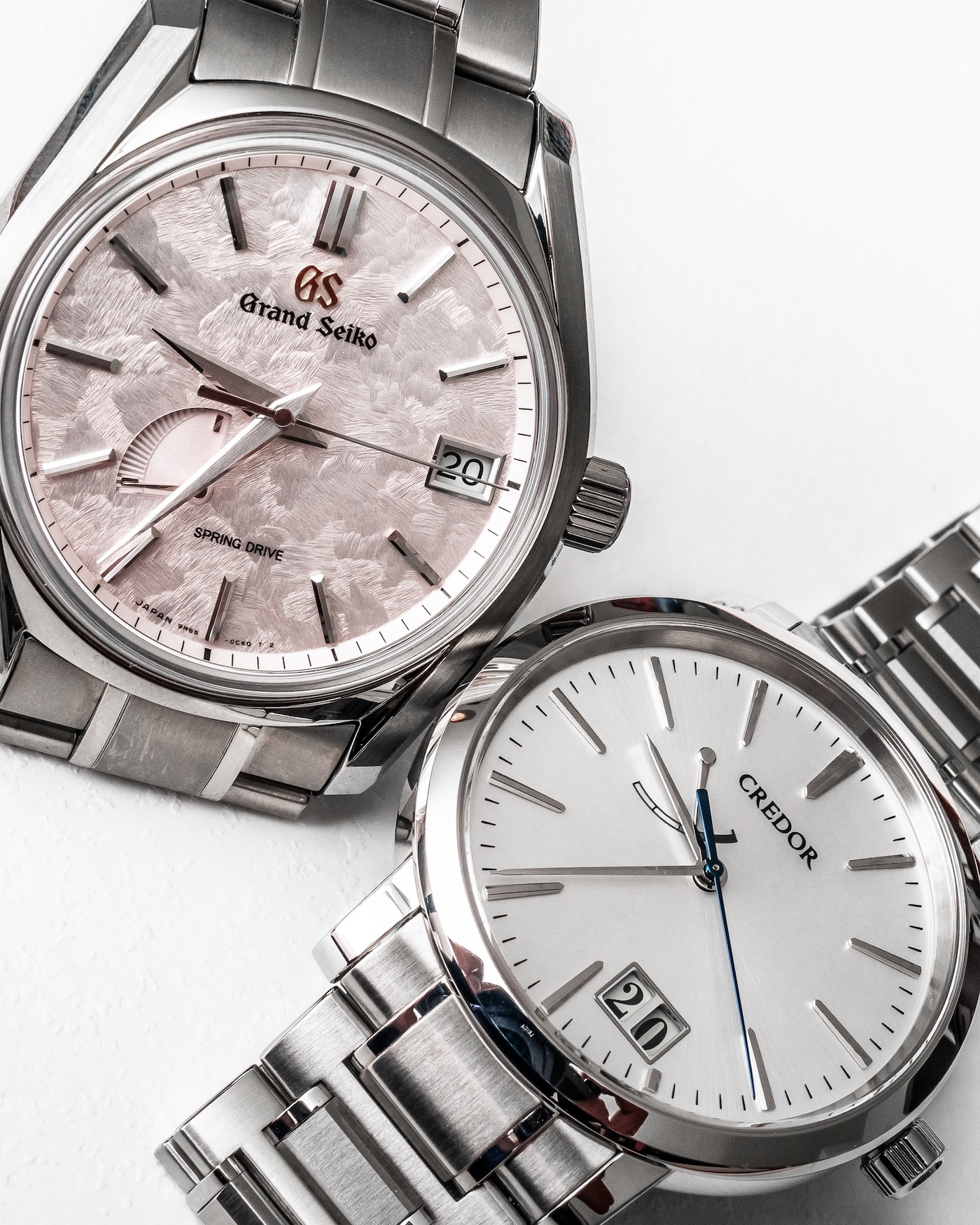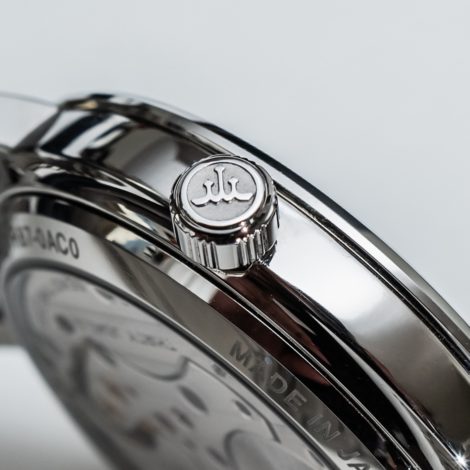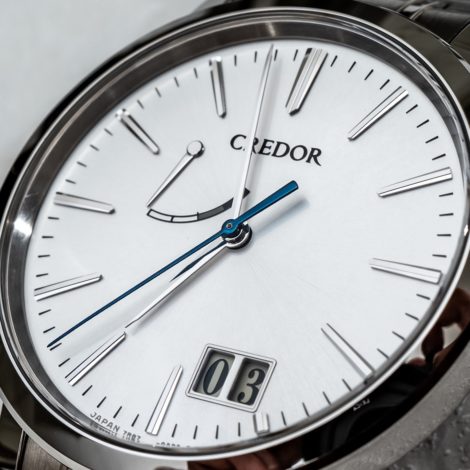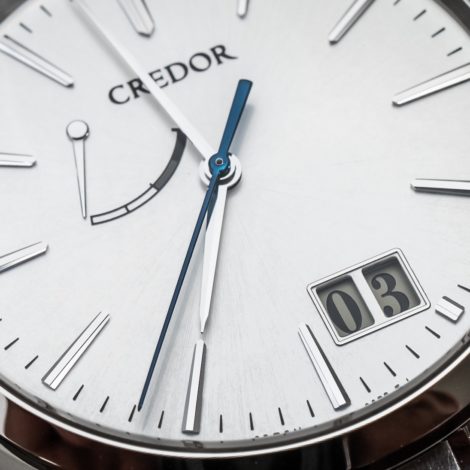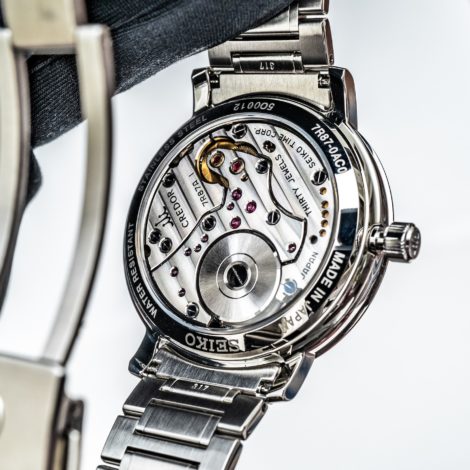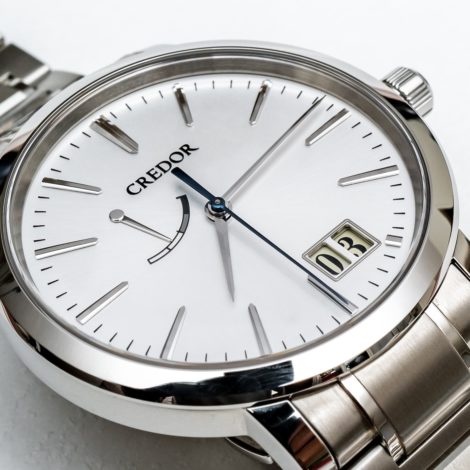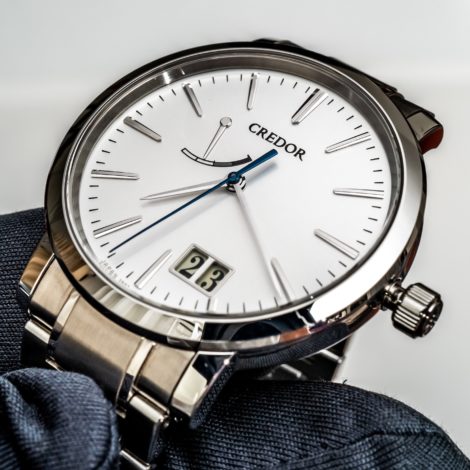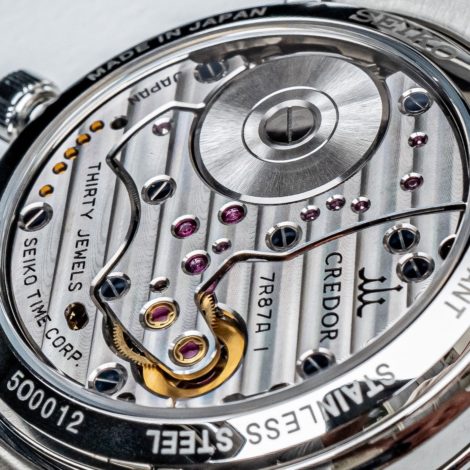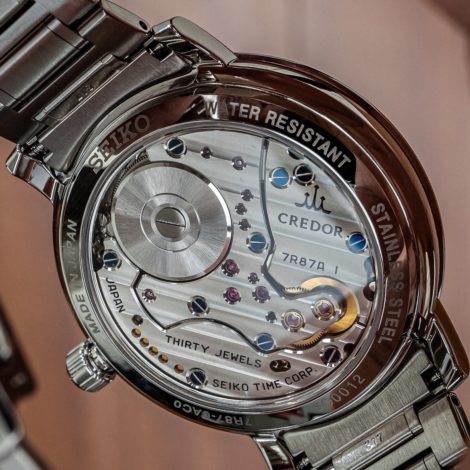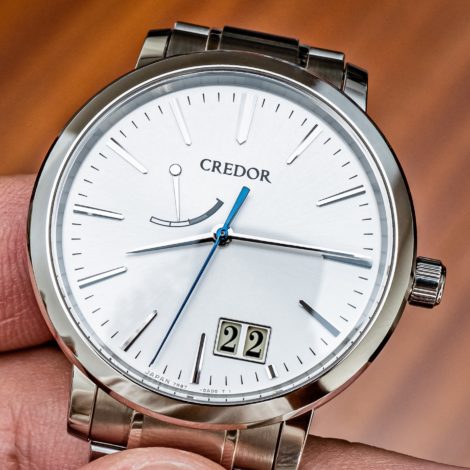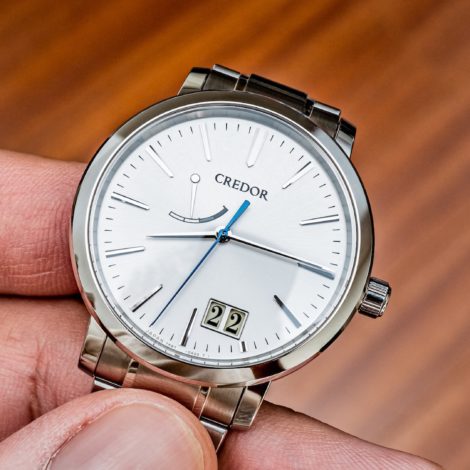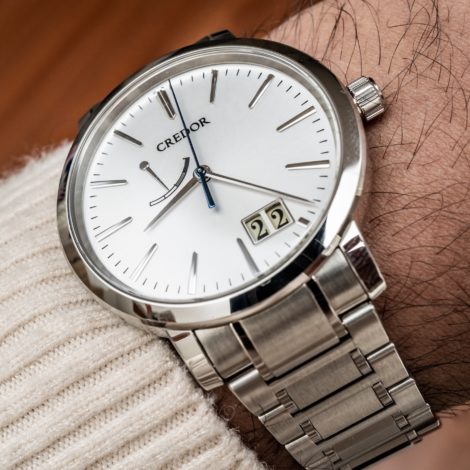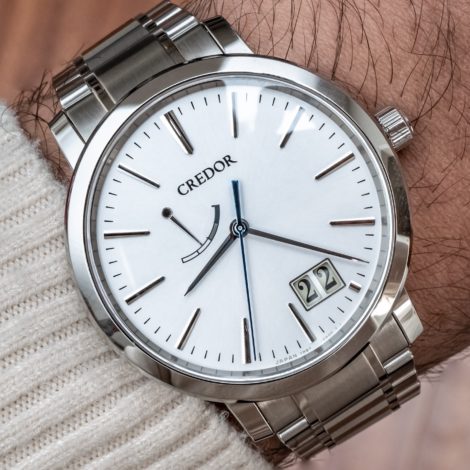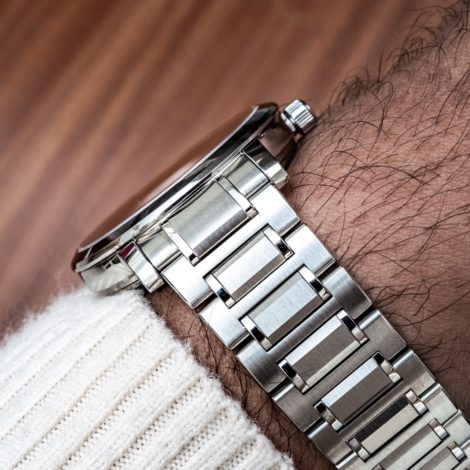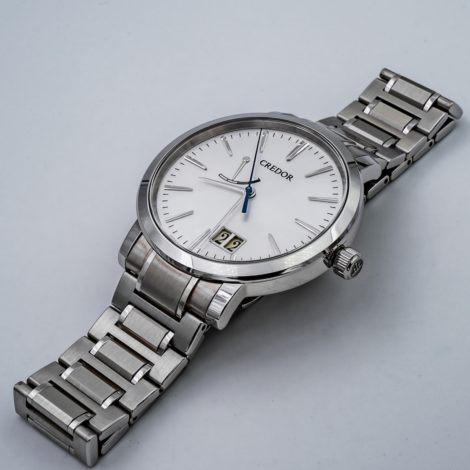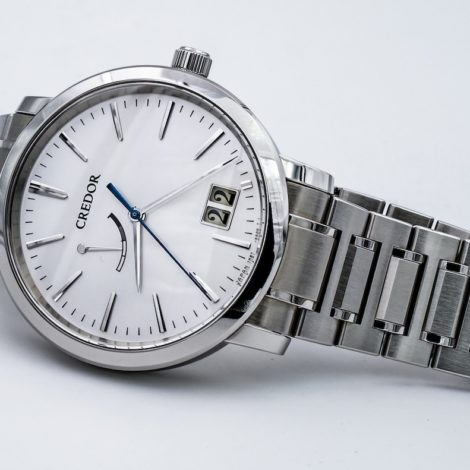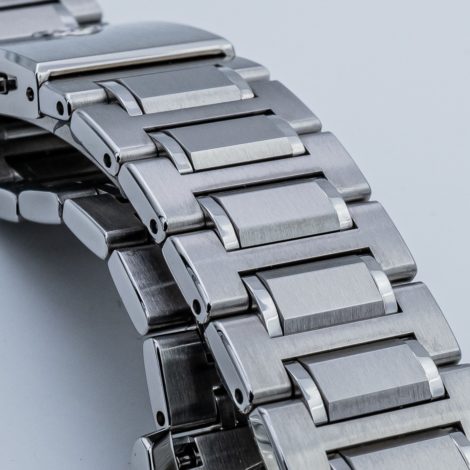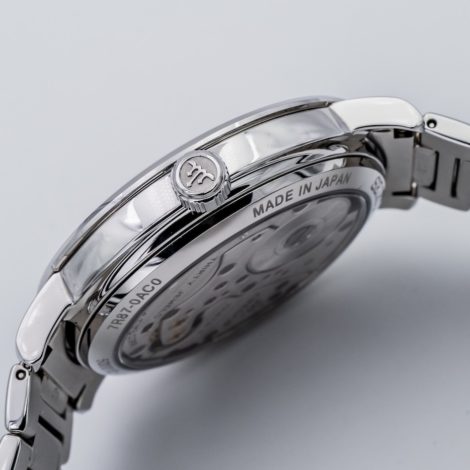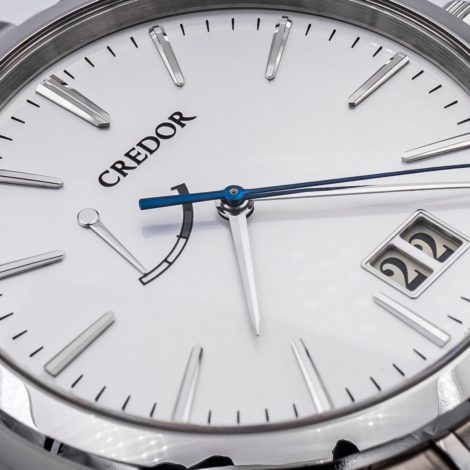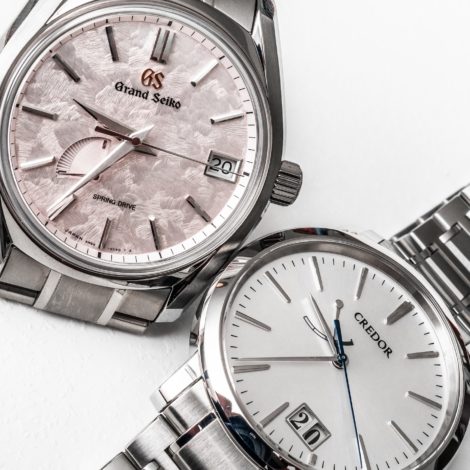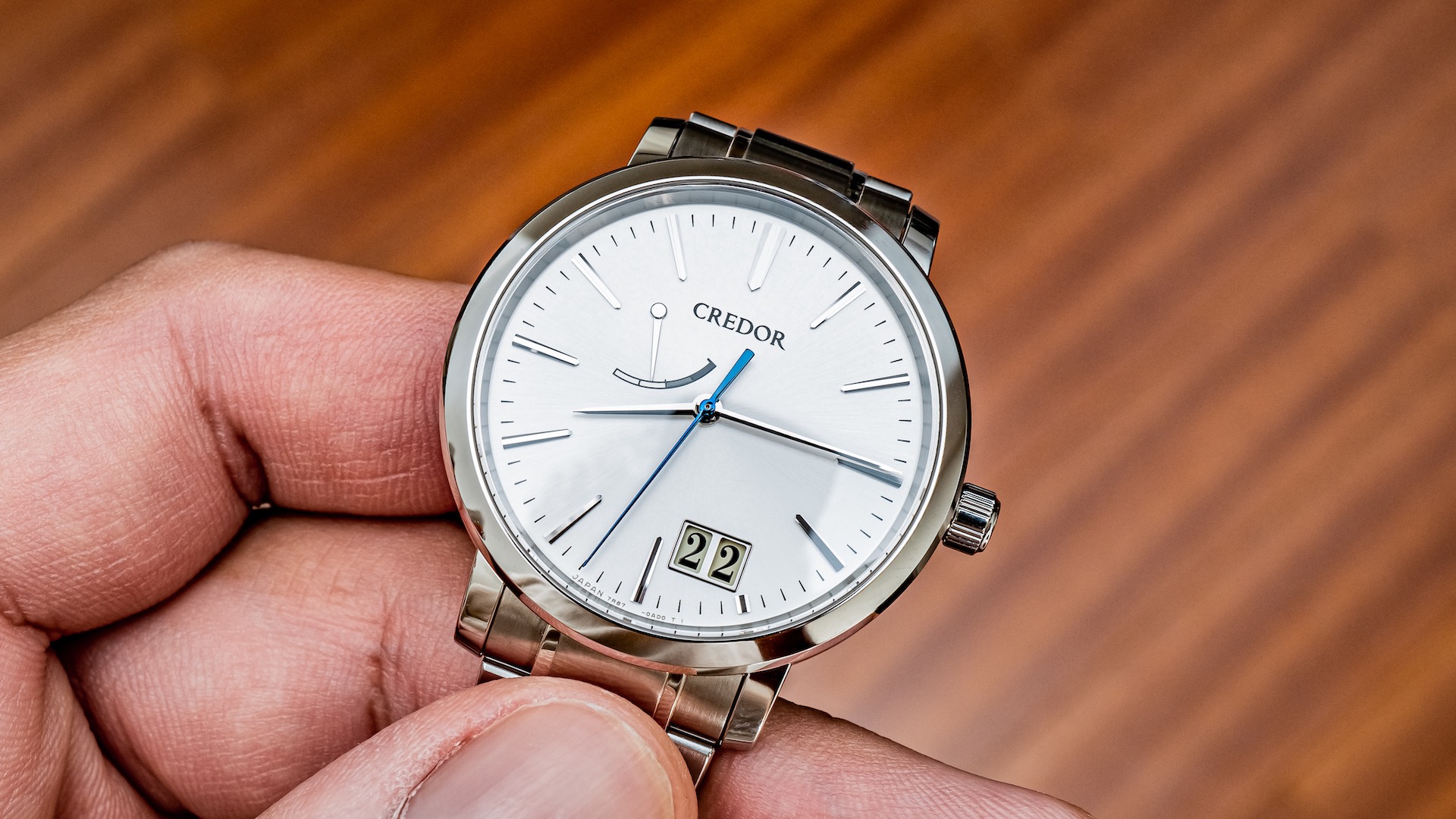
It’s hard to think of a watch brand that has so thoroughly, successfully, and intentionally resisted globalization and the proliferation of social media internationally than Seiko’s highest end arm, Credor. The website is not available in English, and ditto with social media. Of course, truly special pieces like the Eichi II and the Fugaku Tourbillon have gotten their fair share of international press, but the more everyday pieces are largely kept within the Japanese market. I respect that and would never accuse Seiko of not knowing how to break into an international market when they want to — the huge success of Grand Seiko in the United States and Europe is a testament to that.
Fortunately, for me, the team over at Timeless Luxury Watches in Plano, Texas (who collaborated with Grand Seiko on the SBGE249 ‘Blizzard’ GMT and has been introducing Americans to GS/Credor for years now) was able to lend me a mid-range Credor that I think really represents what the brand has to offer in the sub-$10,000 category (as opposed to $50,000 or even $450,000). Even with the watch in hand, I had limited resources in English that I could turn to. I waited for nightfall and lit my Seiko logo Bat-Signal for none other than Joe Kirk (now National Training Manager for Grand Seiko USA), who translated some documents from Japanese to English for me. (A big thanks to Joe for doing that.)

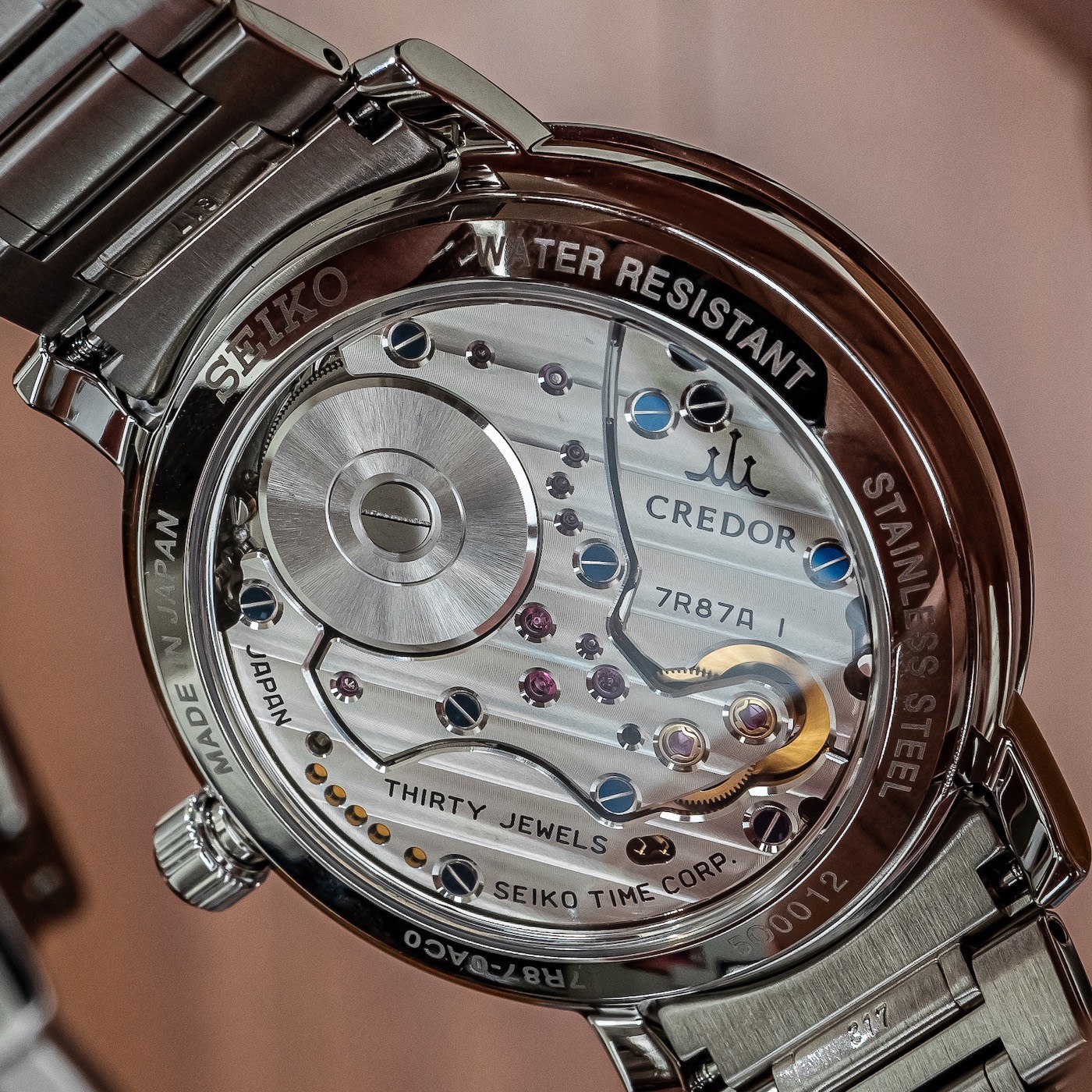
Moving on to the watch at hand, the Credor GCLP995 is a rare manual-wind spring-drive dress watch that has a big date complication. Seen here in steel with matching steel bracelet, it measures 38mm-wide, 9.7mm-thick, with a 43.8mm lug-to-lug measurement. That’s certainly a conservatively sized watch, but even on my 7.5 inch wrist, I don’t think a larger case would be warranted. Everything the Credor Big Date (as I’ll call it) wants to convey, it does so legibly and with a distinctly Japanese elegance.
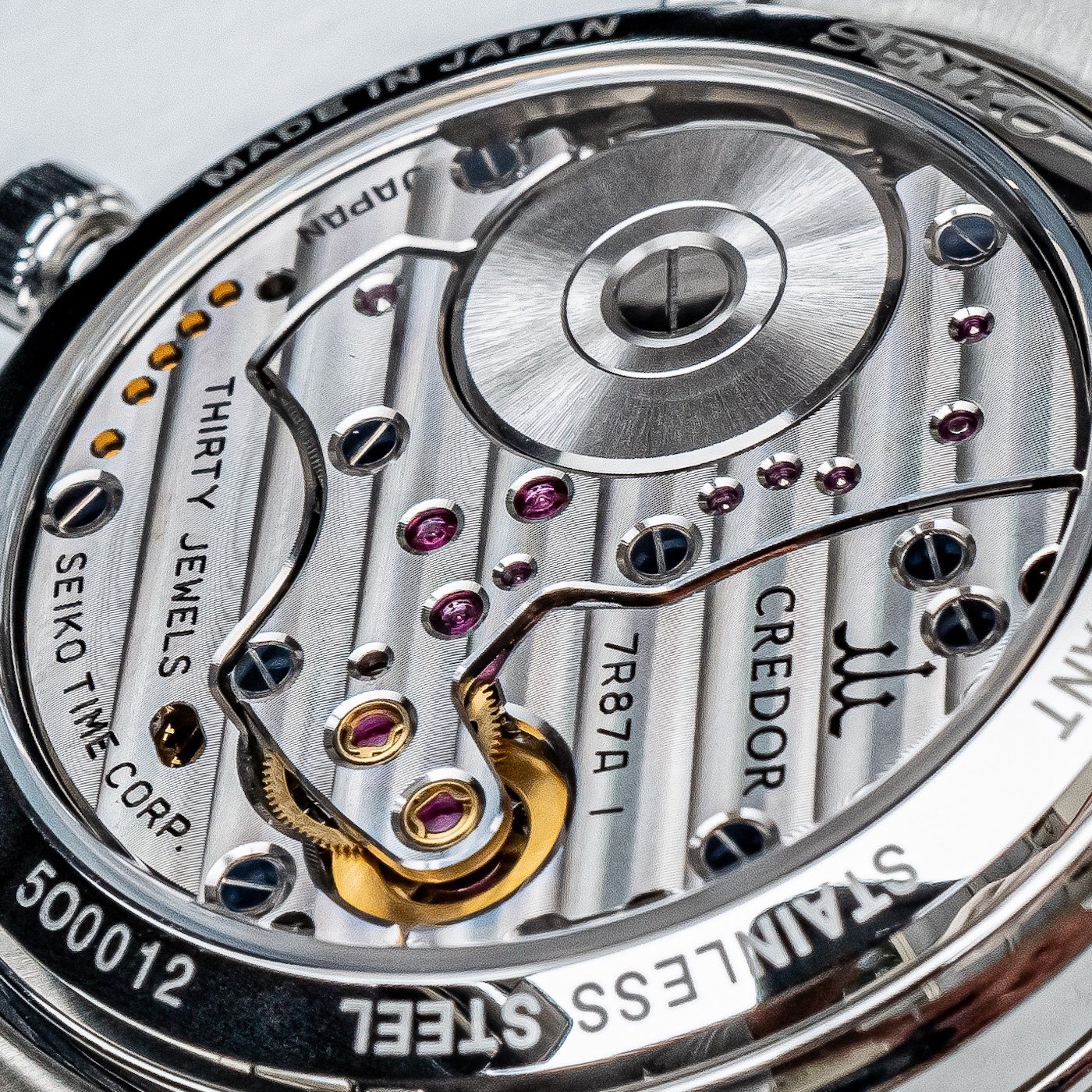
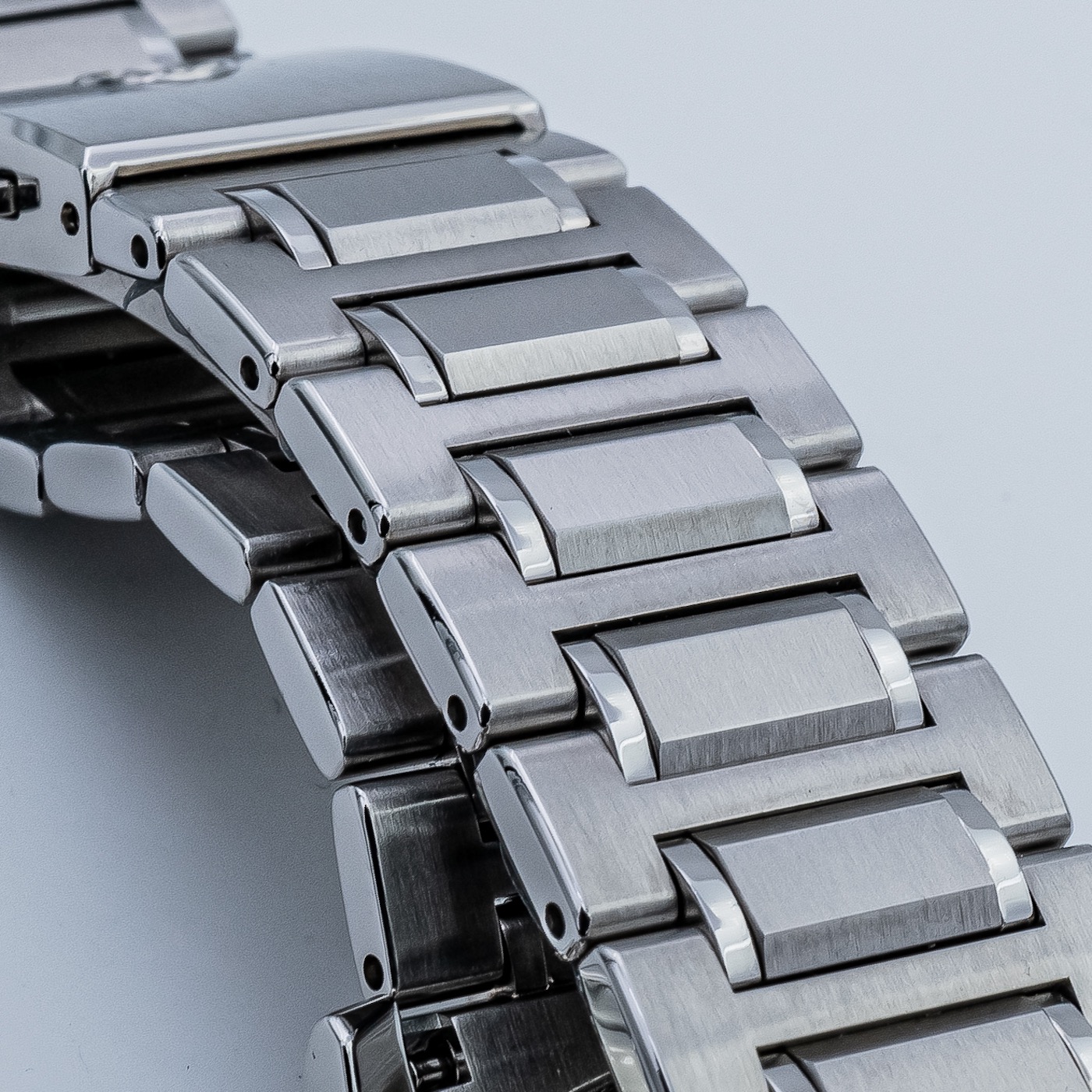
Every aspect of the Credor Big Date seems to be finished deliberately and immaculately. The 7R87 movement is very attractive to look at — note that it is not done in the Micro Artist Studio, which only makes about 25 of their most high end pieces annually, typically denoted by having the spring barrel done in the bellflower AKA kikyo design). I was also really surprisingly pleased with the quality of the bracelet, as well, even though I never really considered that it’s something Credor would excel at. Lesson learned.
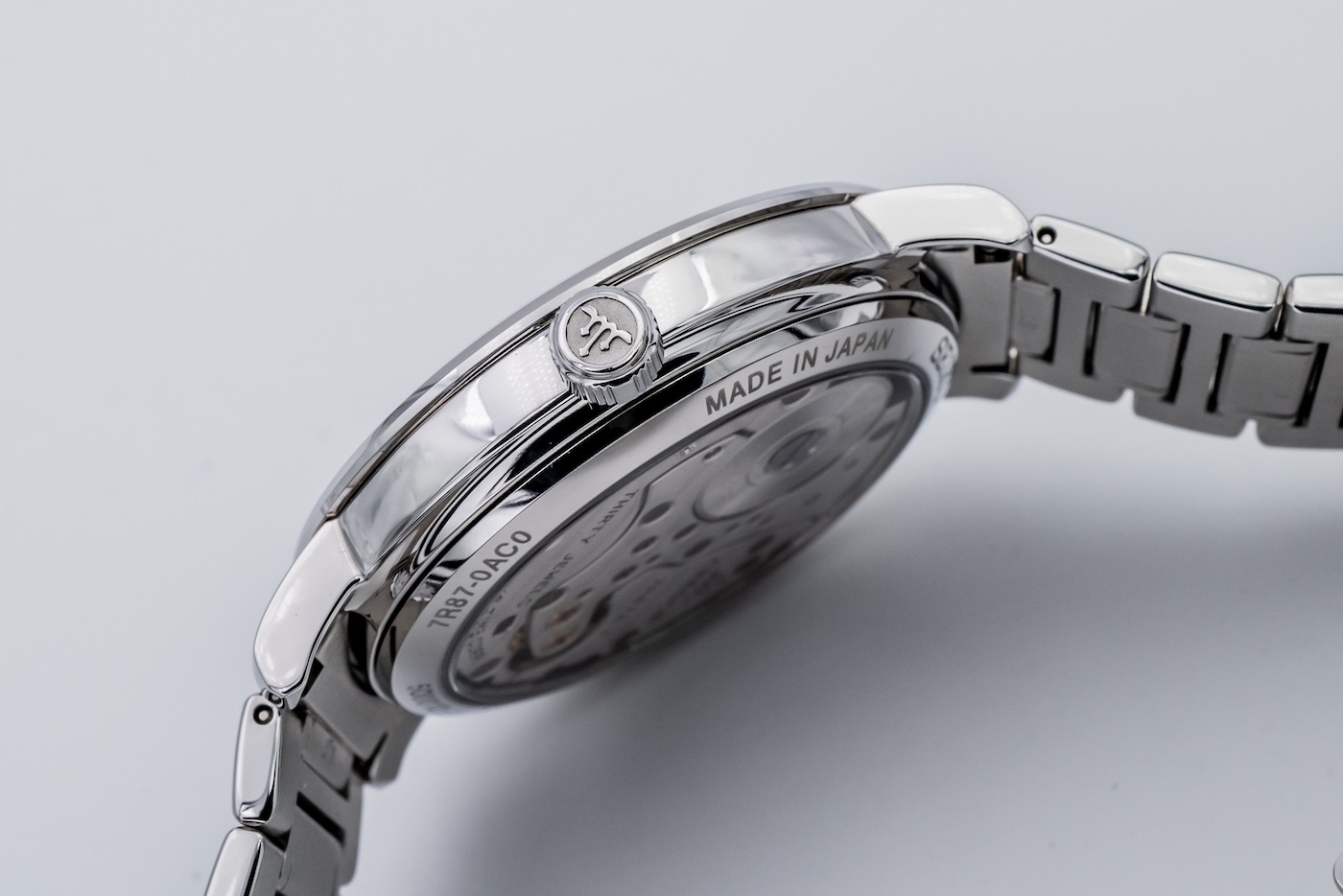
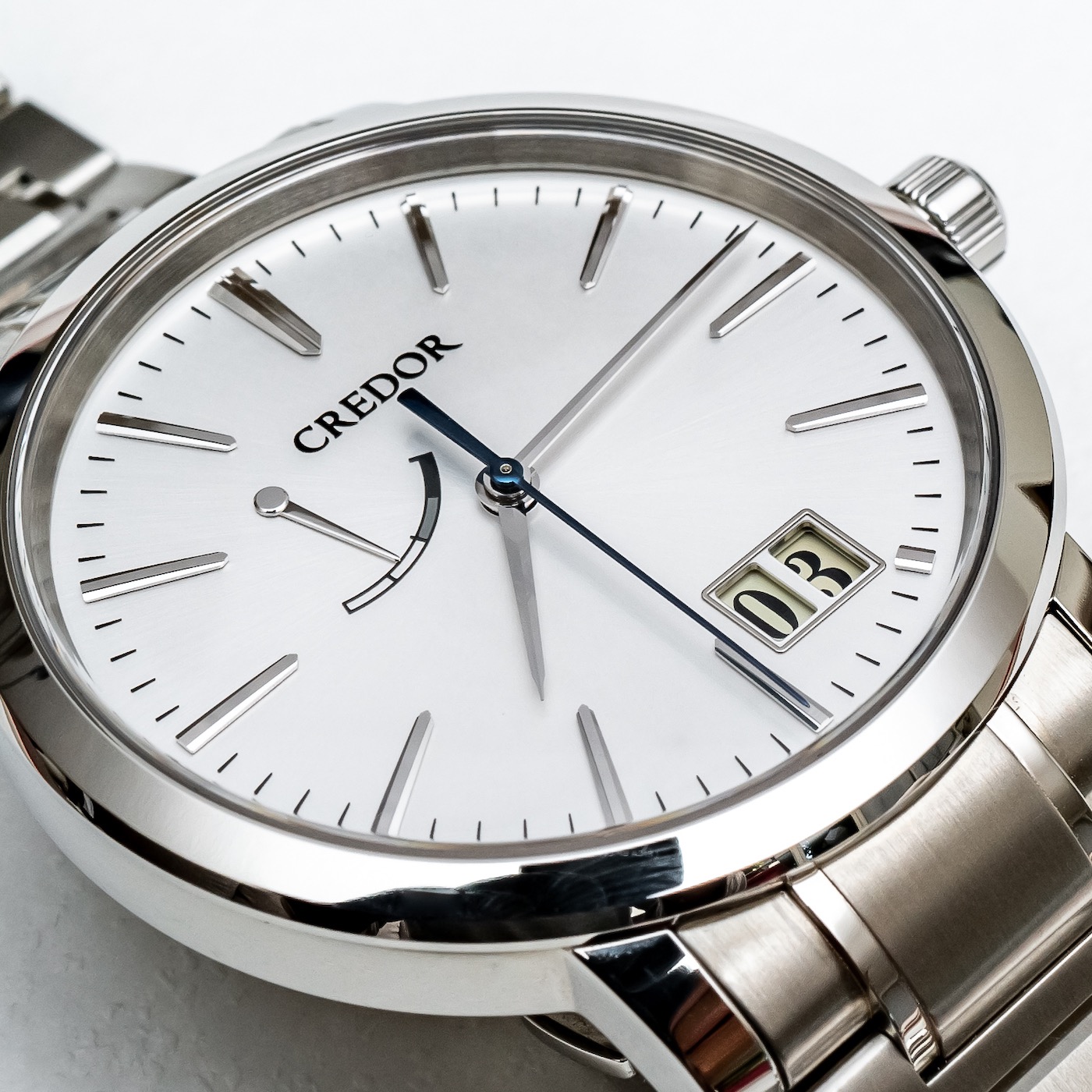
The current Credor lineup is quite dress-watch-heavy, as one would assume, and the GCLP995 falls into the brand’s “Signo” collection. I believe these are their classic, more mid-range watches, whereas you’d find halo pieces like the Eichi II and Fugaku Tourbillon in the aptly named “Masterpiece” collection.
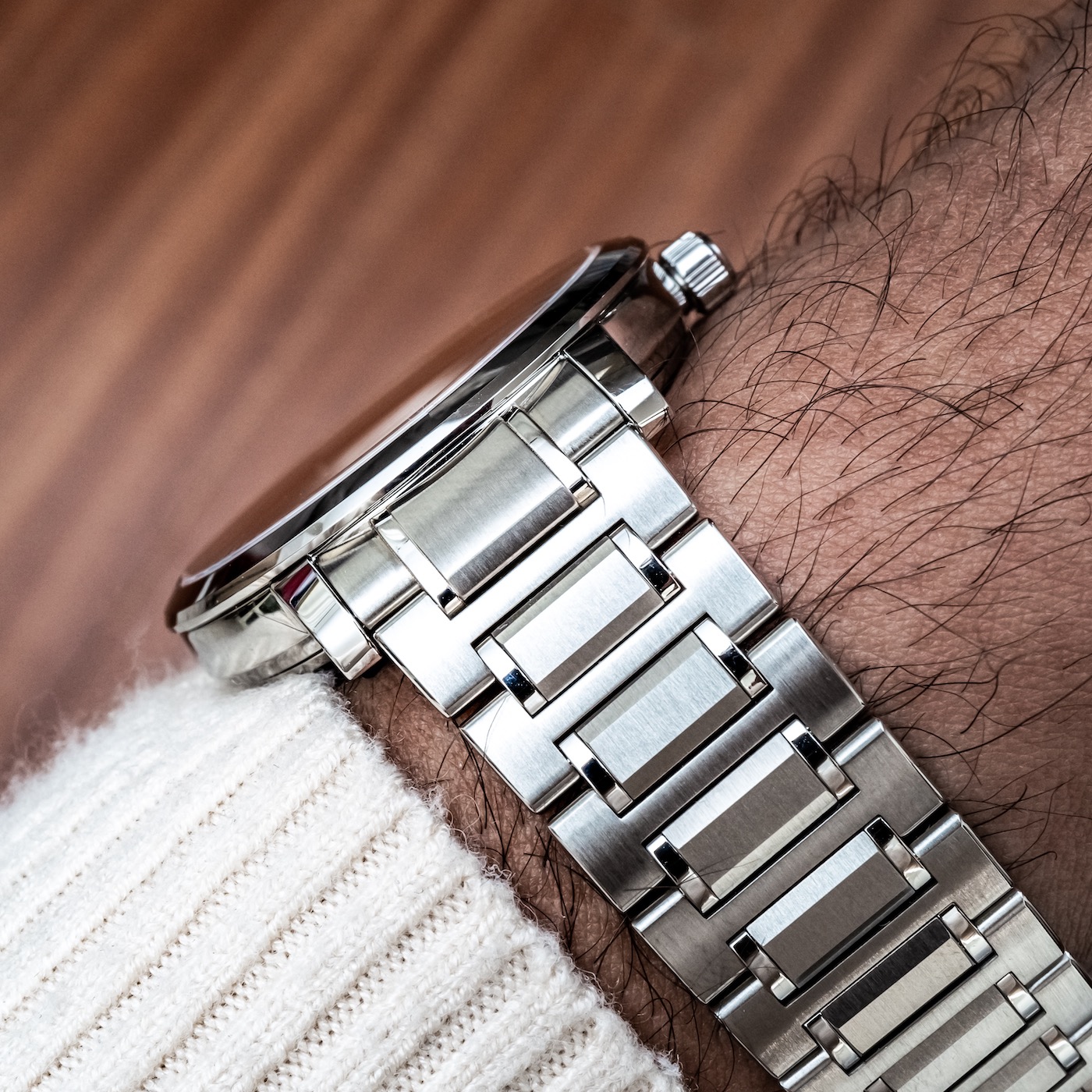
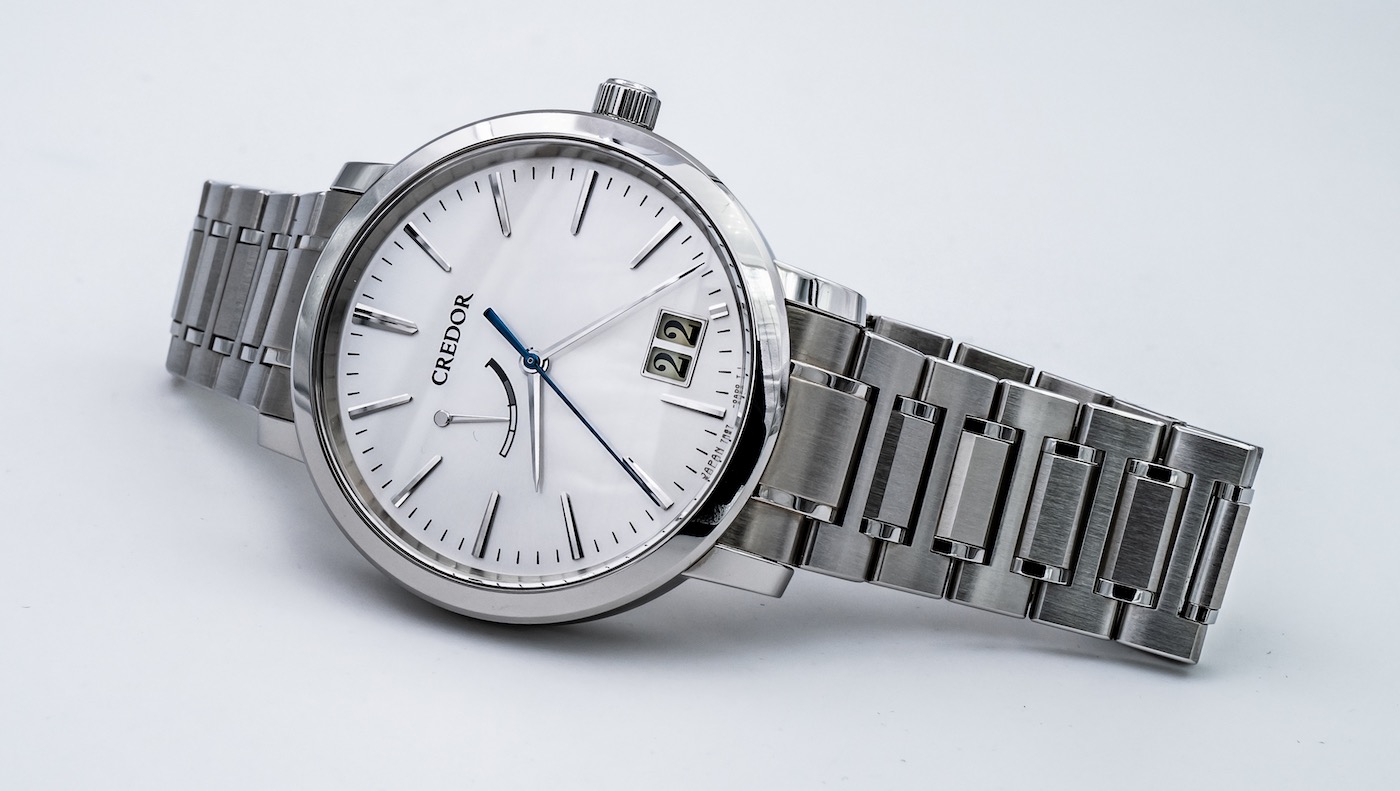
The Credor GCLP995 is a manual-wind spring-drive with a big date complication, which is not something you see very often, if ever. Some people take issue with power-reserve indicators on the front of the dial, and while the original Eichi had what I consider a beautiful indicator on the dial, the Eichi II moved it to the back of the movement. Of course, the 7R14 caliber used in the Eichi II is one of the brand’s most impressive and rare movements out there.
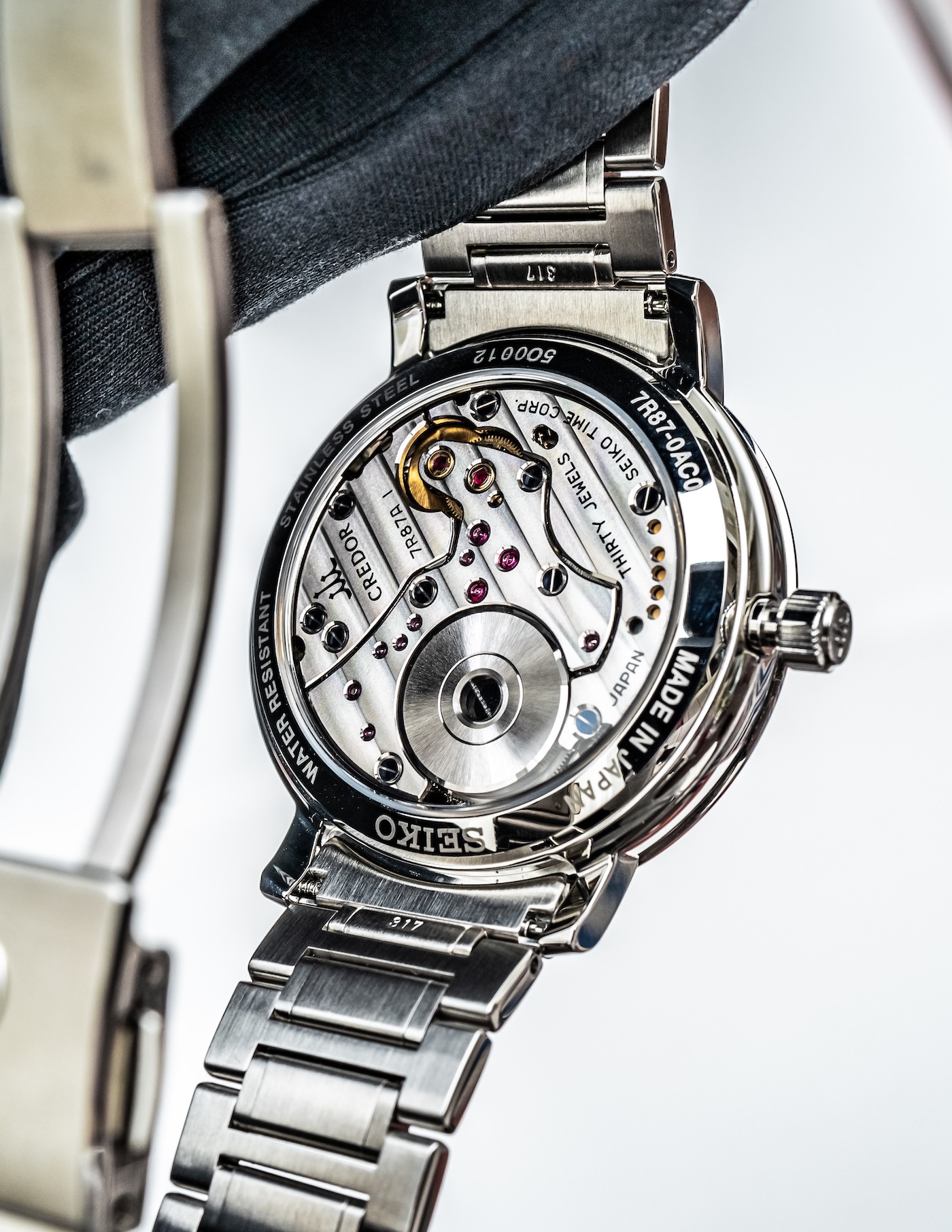
2019’s Grand Seiko 9R31 manual-wind spring-drive movement has similar architecture to this Credor 7R87 caliber, though with a longer 72-hour power reserve. The caliber 7R87 with Big Date is exclusive to Credor and is finished with beveling throughout, a sunray pattern on the barrel, ten blued screws, and Côtes de Genève on the bridges. Accurate to ± 15 seconds per month, the 7R87 has a power reserve of 48 hours. The 7R87 is very slim at 4.3mm-thick, and the 9.7mm case thickness on the GCLP995 is made more impressive with the addition of that unusual Big Date complication.
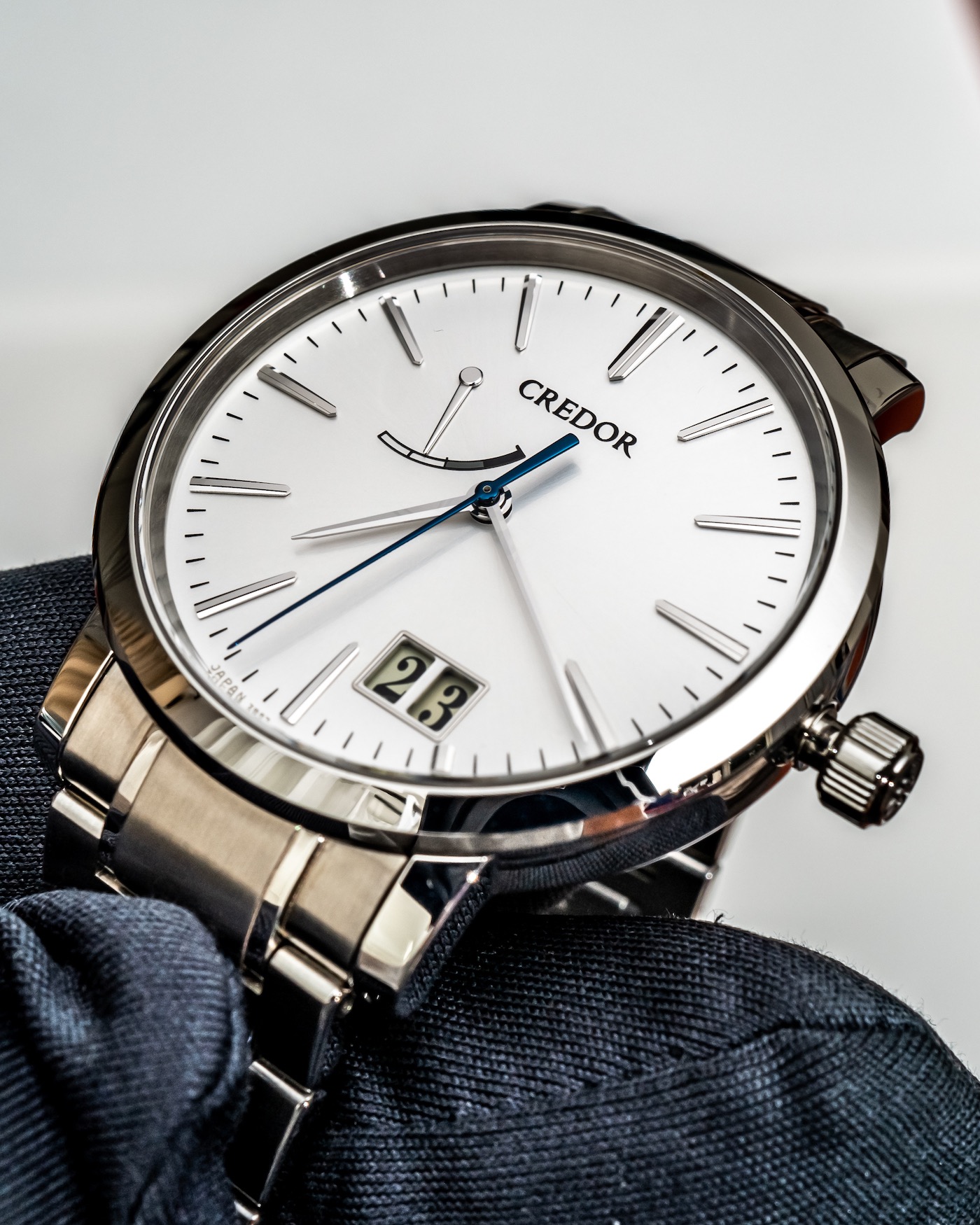
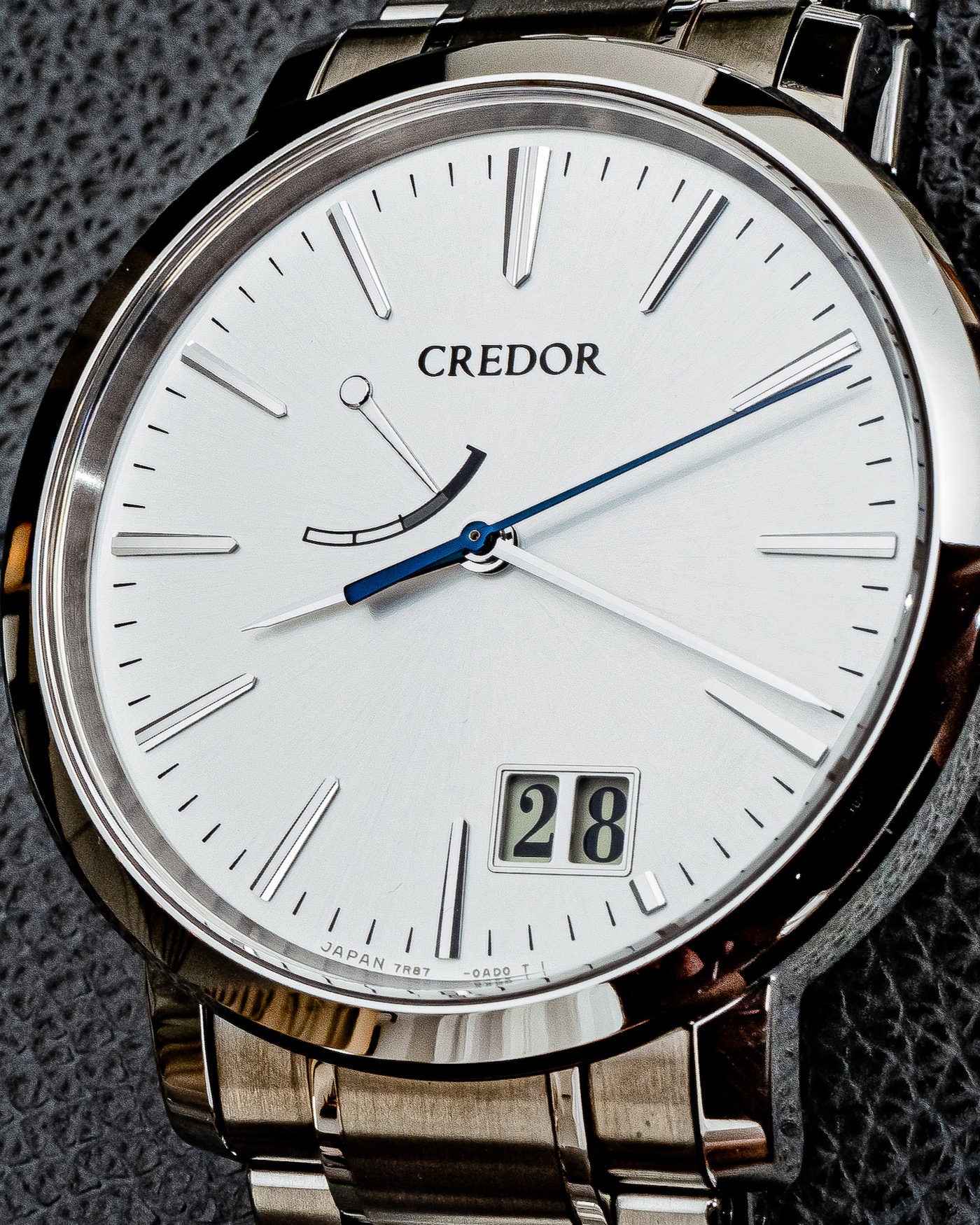
Looking at the dial, the hour and minute hands have tapered ends and are actually the same shape as those seen on the Eichi II. No, they’re not heat blued the way the Eichi hands are, but they are impeccably done nonetheless. The hour and minute hands are also the perfect length with the minute hand reaching the end of each minute marker and the hour hand just keeps from touching the applied indices. While they are simple at first glance, the diamond-cut hour markers are so well done. Along with superb beveling, they point at the ends but they actually have overhang like a very sharp cliff’s edge.
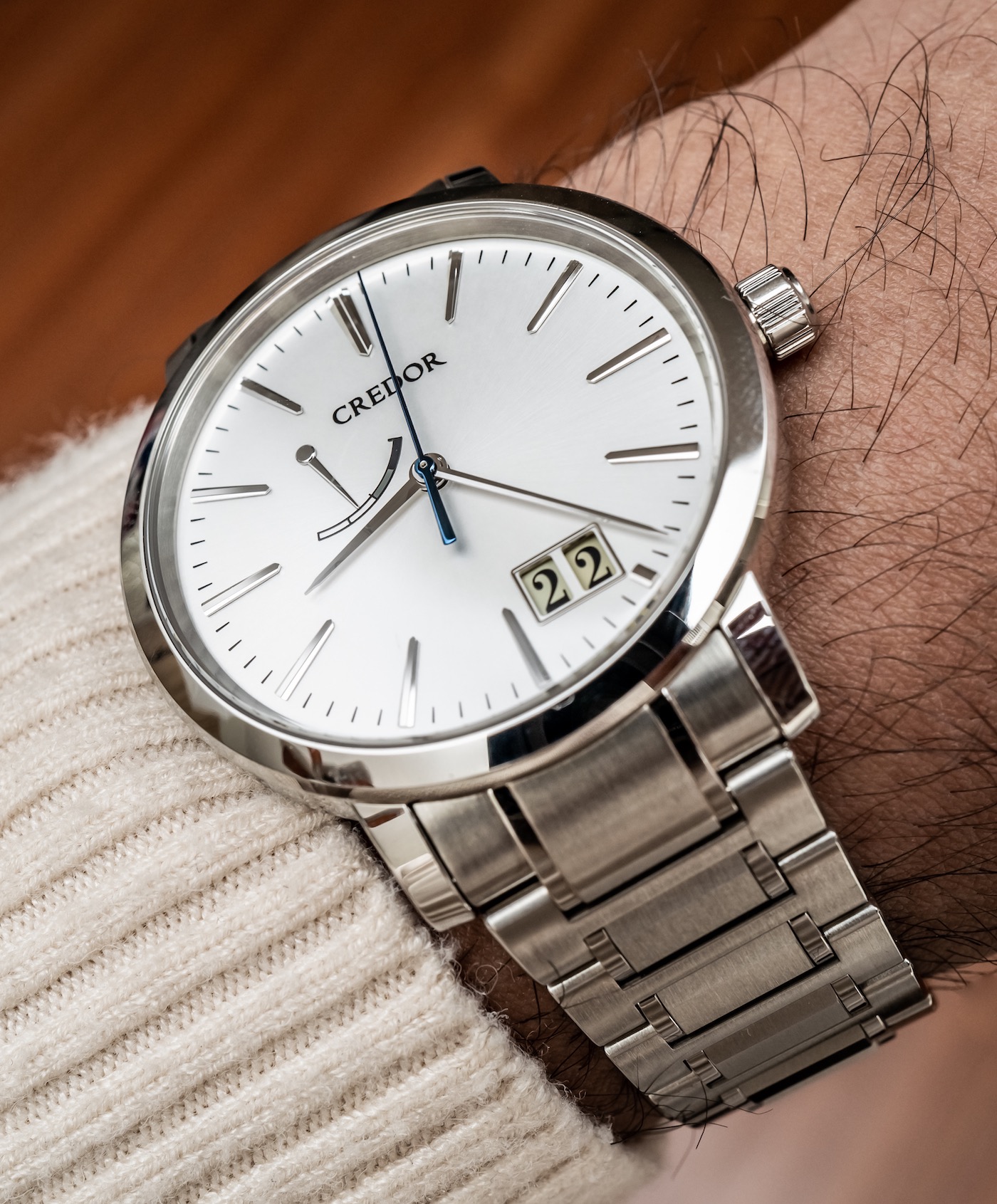
The blued seconds hand glides across the dial like a cool, refreshing breeze, adding some welcome color to the silver dial. Interestingly, there is a very similar model (GCLP993) that comes on a leather strap and has a white lacquer dial, but the seconds hand is not blued. I would love if if the blue seconds hand and white lacquer dial was an available combo, but alas, it is not.
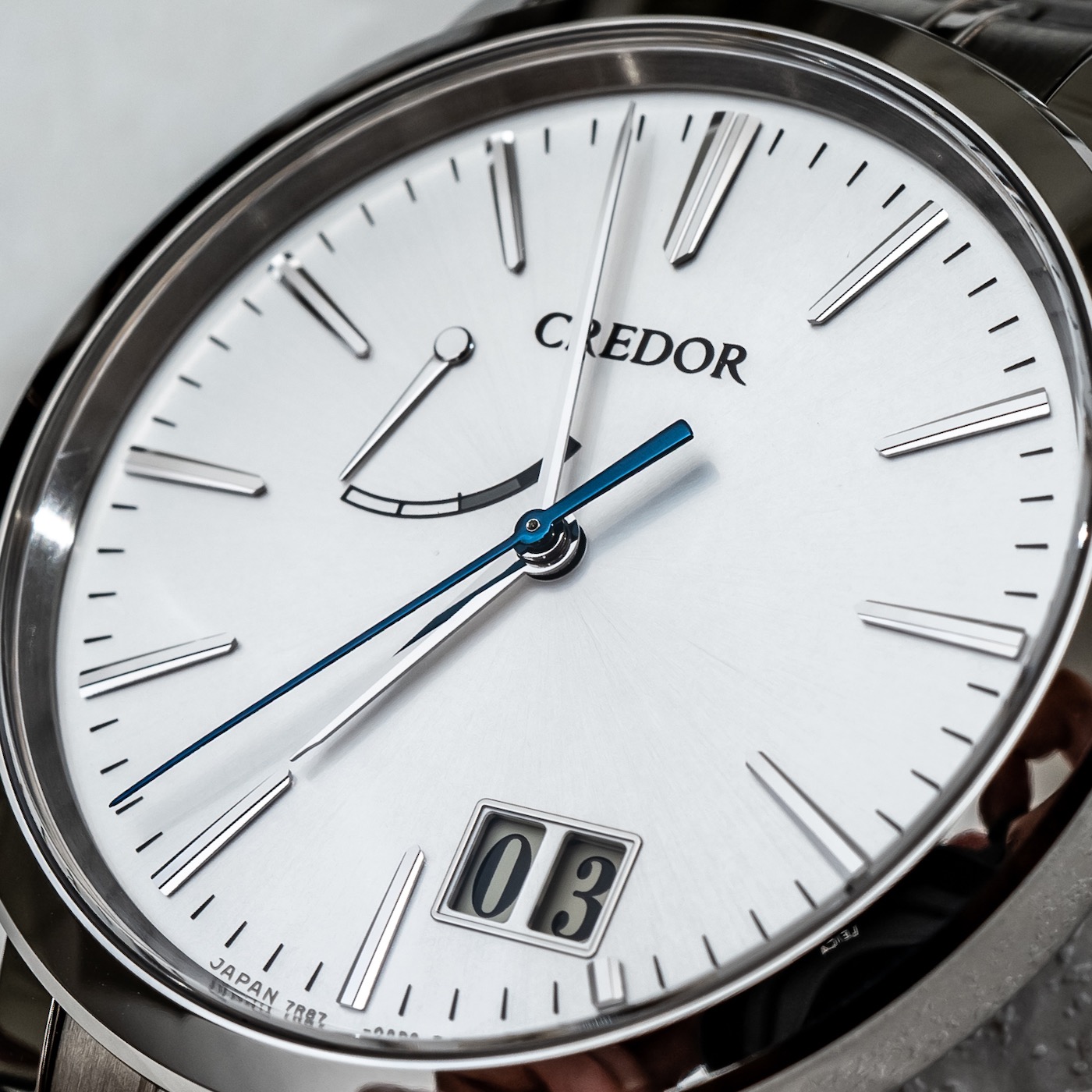
Between 5 and 6 o’clock sits the Big Date window, which uses a patented dual-disk date wheel design to try and keep the digits as coplanar as possible. I am sure the patent has to do with the complication and the spring drive system and not the dual wheel itself, as several other watchmakers do this (as does Lange, which did one of the first modern big-date watches back in the 1990s with the Lange 1). While the Credor big date does not reach Glashütte Original Panaroma Date level of refinement (which I think is the best out there), it is impressively done, especially when you consider it to be a “fringe” complication for the brand.
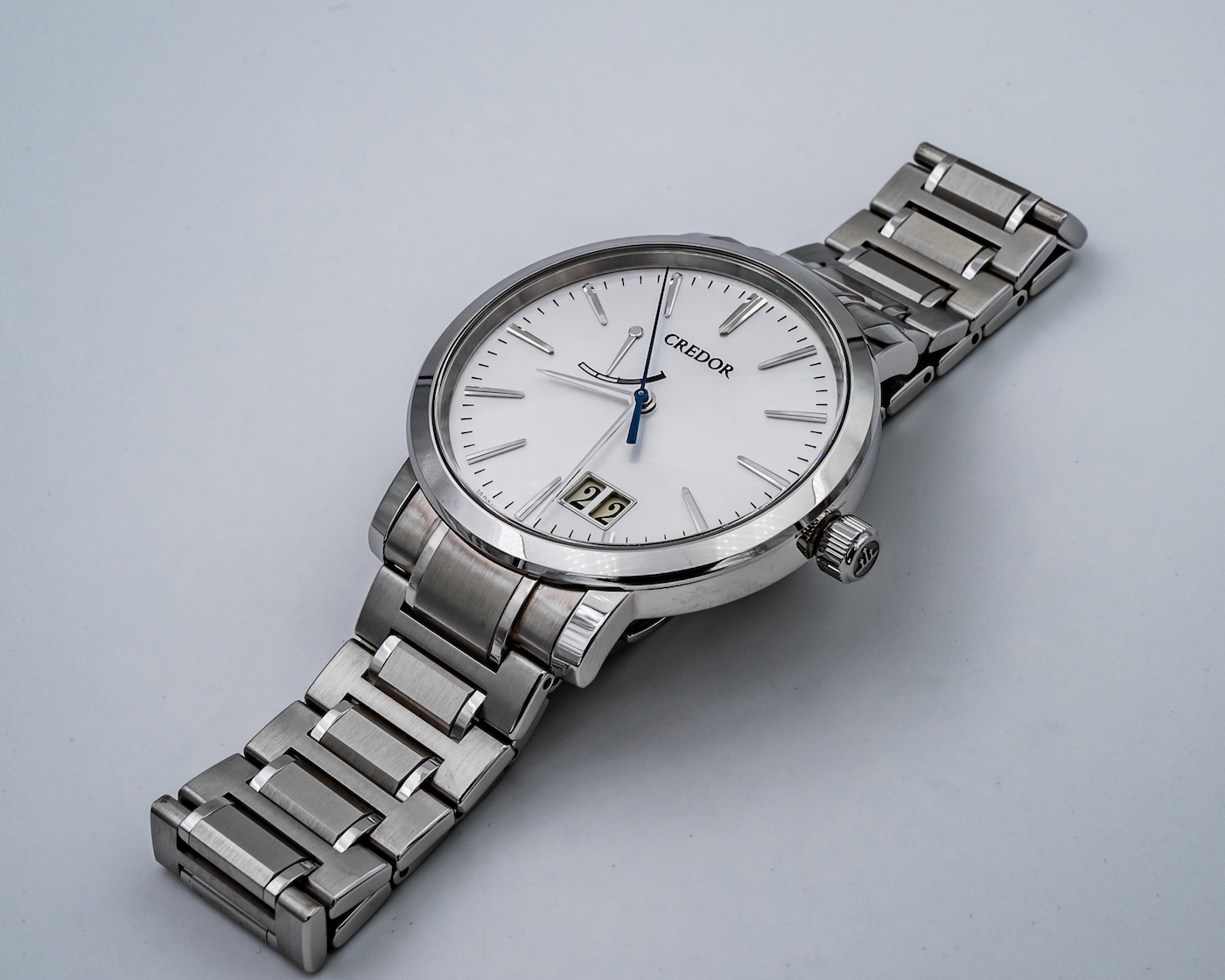
Interestingly, Credor uses a warm, light tan background color for the big date windows. It did throw me off a bit at first, but I grew to like it, actually. And if you don’t (which is pretty understandable), it is actually much more subtle in person than it is in photos. The easy answer here would be that Credor did not want to have date window backgrounds that clashed with the warm gold dial of the GBLP997, which is the white gold Credor Big Date. However, the big date on an older “Node” model done for the 10th anniversary of Spring Drive came in a blue or silver dial, both with this color background. I think it’s simply an aesthetic decision, and one I personally like.
Color aside, Credor did mirror finishing on the inner sides of the date windows that is a great detail and goes a long way in avoiding a simple “stamped-out” look.
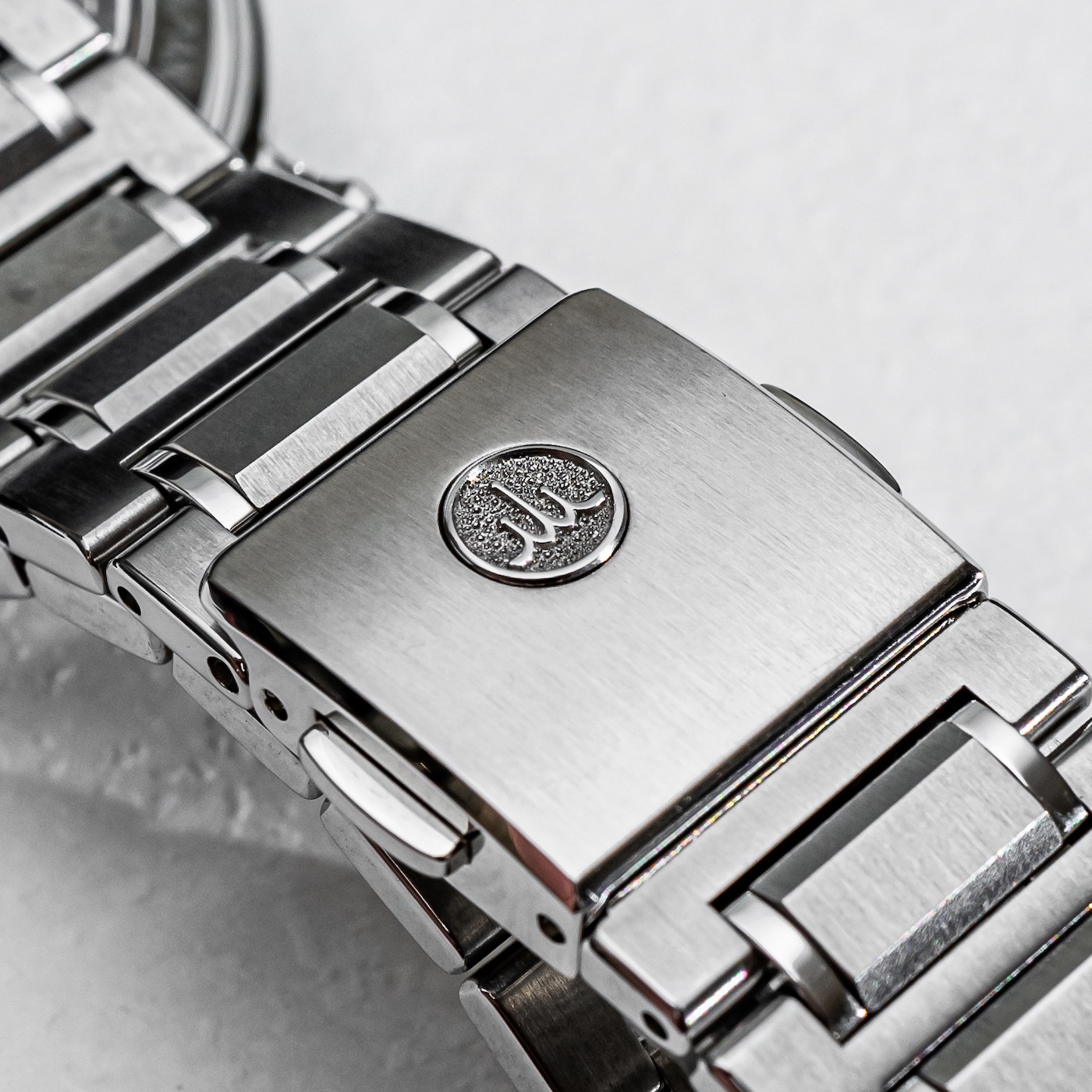
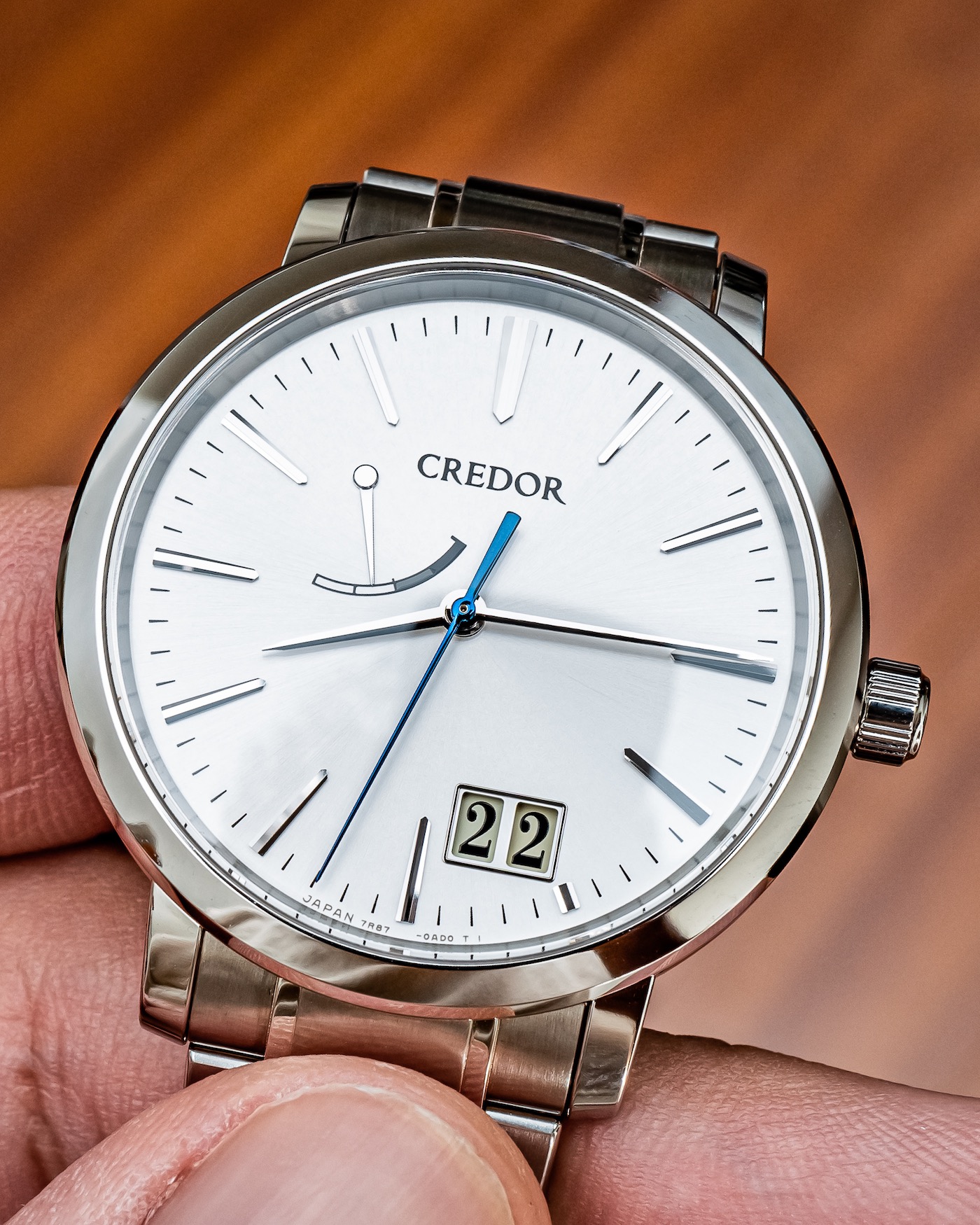
The Credor GCLP995 Big Date is a subtle everyday dress watch that is clearly done with a Japanese audience in mind. It’s not going to blow you away with elaborate dial work or a Micro Artist Studio movement, but it’s not meant to. As with the Rolex Datejust, the competence, quality, and brand reputation merit the cost.
The steel GCLP995 isn’t the only variety of Credor Big Date, as it also comes in precious metal versions with more decorated dials. The GBLP996 is in 18k pink gold with the lightly textured shirogane AKA silvery “shoji” dial that is reminiscent of delicate paper (2,000,000 Yen or ~$18,000 USD pre-tax). The GBLP997 is done in a white gold case with a very warm tan-gold-colored shoji dial (2,100,000 Yen or ~$19,000 USD pre-tax). The GCLP993 with white dial and leather strap is a little bit less (720,000 Yen or ~$6,500 USD pre-tax). Price for the Credor GCLP995 Big Date is 790,000 Yen which is roughly $7,100 USD pre-tax. If you speak Japanese or will settle for a Google-translated page, you can learn more at credor.com.
Once again, thanks to Timeless Luxury Watches for loaning me the Credor GCLP995 and to Joe Kirk for all his help.
